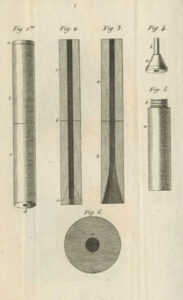Cuffless Blood Pressure Measuring Devices – European Society of Hypertension Guidelines

4.1.2 Cuffless blood pressure measuring devices
All cuff BP measurement methods have limitations, mainly because they provide snapshot BP values in static conditions and ignore the dynamic nature of BP, i.e. its variability in response to different daily challenges and activities [68,69]. Moreover, errors due to inadequate cuff size, shape and positioning are common, and the limb compression during cuff inflation may cause discomfort, particularly at work and during sleep [68,70]. Novel cuffless BP measuring devices, which use sensors, signal processing, machine learning and other technologies embedded in wearable devices, smartphones, pocket devices or other types of devices are already available on the market [68,71] and have considerable potential to improve awareness,A major concern is that the AAMI/ESH/ISO Universal Standard protocols [68,72], which are used for validating cuff BP devices, are inadequate for cuffless devices which means that their accuracy remains unproven. Furthermore, there is still no agreed standard of performance for these novel technologies [68].
Finally, most cuffless BP devices require periodic calibration using BP values measured by a standard arm cuff device. Some of them also require information on the user such as age, sex and other characteristics [731. Basically, these devices do not ‘measure’ BP but track BP changes compared to the calibration BP or attempt to predict BP using demographics and machine learning technology [68,74]. For these reasons, at the present time, cuffless BP devices should not be used for the diagnosis or management of hypertension in clinical practice [68].
4.1.3 Validation of blood pressure measuring devices
In the last 30 years, several scientific societies and associations have developed validation protocols for the evaluation of the accuracy of BP measuring devices (751, the most widely used one being the ESH International Protocol validation 76]. In 2018, a Universal Standard for global use was agreed by the US Association for the Advancement of Medical Instrumentation (AAMI), the ESH and the International Organization for Standardization (ISO) [72]. It should be noted that an electronic BP monitor, which is accurate in adults, may not be accurate in some special populations, e.g. in children or pregnant women, which means that under these circumstances. a separale validation process and dedicated devices for these conditions are required for BP monitoring.
Unfortunately, validation for accuracy is not mandatory prior to the distribution of BP devices in the market [75,77]. Thus, established protocols have been used and published in fewer than 10% of BP devices [62,78]. Healthcare professionals, patients and the public, should check for lists of accurate devices, which are available on the internet [62]. STRIDE BP (www. stridebp.org) an international organization endorsed by the ESH, the International Society of Hypertension (ISH) and the World Hypertension League (WHL), presents updated lists of validated BP monitors for office, home and ambulatory BP measurement in adults, children and pregnant women in English, Spanish and Chinese. Other national online sources for validated BP monitors are those by the British & Irish Hypertension Society (https://bihsoc.org/bp-monitors/), the German League of Hypertension (www.hochdruckliga.de/betroffene/blutdruckmessgeraete-mit-pruefsiegel), the American Medical Association (www.validatebp.org), the Hypertension Canada (www.hypertension.ca/bpdevices) and the Japanese Society of Hypertension (www.jpnsh.jp/com_ac_wg1.html) [62].
Periodic calibration is necessary, particularly for aneroid devices, whereas for electronic devices, the performance of the BP measurement algorithm is not affected by use, and what is mainly needed is maintenance of the device parts (e.g. cuffs, tubes or connections). Checking for maintenance is advisable once a year for professional office and ambulatory BP devices and less frequently for home devices [72,79].
Devices for BP measurement

Article by, European Society of Hypertension Guidelines.





